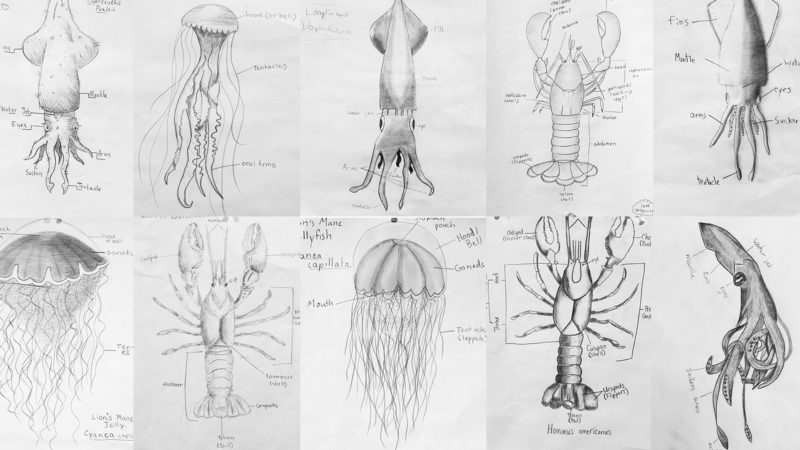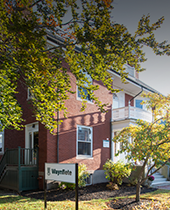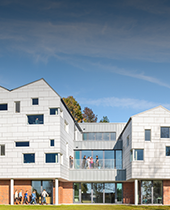Science/visual arts collaboration: seventh graders contribute models to traveling exhibition
In 2019, Portland artist Anna Dibble began planning a collaborative public art installation to help promote stewardship and awareness by reconnecting people with the natural world. The multi-year art/science/education initiative would focus specifically on biodiversity changes in the Gulf of Maine caused by climate change and other human impacts. Anna founded the organization Gulf of Maine ECOARTS to coordinate the effort.
The exhibit’s central piece will be a fictional ecosystem—“a cross section of atmosphere, sky, and ocean featuring a 24-foot North Atlantic Right Whale and a selection of key endangered marine life, from phytoplankton to fishermen and Native Americans.” The installation will be designed and built by a collaborative team of professional sculptors and filmmakers, educators, and more than 100 students from across Maine, ranging from middle schoolers to college students. Disciplines will include science education, sculpture, painting, sound design, lighting, film, virtual reality, and—when the installation is in place—arts- and science-related programming. The sculptures will be fabricated from recycled material and repurposed beach debris.
Anna approached Waynflete to gauge faculty interest in the project. Science teacher Katrina St. John recognized that the initiative would be a perfect fit with the seventh-grade study of climate change. “Students would be able to see a direct application of their learning about climate change in the Gulf of Maine,” she says. “It would make the topic hit home for them.”
This past fall, seventh-grade students began their study of the history of the Earth’s climate and how it has changed over time. They analyzed thermometer data from the past 150 years, and for earlier periods reviewed data points collected from physical, chemical, and biological materials preserved in the geologic record (these “climate proxies” include ice cores, sediment cores, tree rings, and isotope ratios). Students learned how greenhouse gases act as a thermal blanket and how rising air temperatures will bring about change.
After writing a research paper on climate change and discussing examples of environmental injustice, the focus shifted to the Gulf of Maine. Students picked one of three creatures: longfin squid, lion’s mane jellyfish, or lobster—all of which are all affected by rising sea temperatures. Students created scientific illustrations of their specimens. Then, with the help of visual arts teacher Leslie Murray, they began fabricating large-scale models of the organisms out of paper maché and wire armatures.
The finished creatures will become part of the ECOARTS installation. While the exhibit will kick off at Bigelow Laboratory of Ocean Sciences in Boothbay, Katrina and Leslie hope that ECOARTS can add Waynflete to the future tour schedule. Visit their website to keep up to date!
Read a Press Herald article on the project (6/16/2020).



